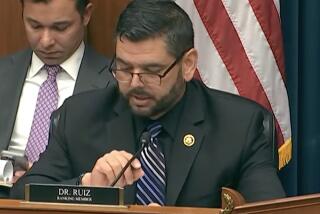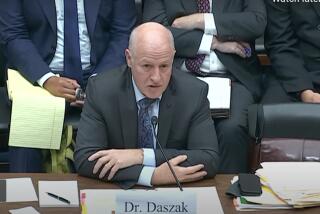Subverting U.S. Health
In 1955, reporter Edward R. Murrow asked Dr. Jonas Salk who owned the patent on the polio vaccine that Salk had invented. “Well, the people,” a puzzled Salk responded. “There is no patent. Could you patent the sun?”
Dr. Salk’s professional life was as far removed from that of today’s researchers at the National Institutes of Health as the sun is from, say, Wall Street. Theoretically, the NIH belongs to the American people. U.S. taxpayers give it $28 billion a year to develop remedies for human misery. Many assume that today’s NIH researchers are carrying on the mission as Salk did, free from financial or commercial pressures that can taint scientific research.
An article on today’s front page by The Times’ David Willman shows that instead, the NIH has become an arm of commerce, a place where objective science is being trampled in a stampede for market share. Its scientists brazenly collect paychecks and stock options from biomedical companies, and they do so with the blessing of their leaders. With the collusion of those leaders, they are moving swiftly to conceal the sources of their outside incomes from the public.
Who is to know whether a drug is being tested because it really has promise -- or because the scientists doing the testing are being paid by the company that developed it?
How can a desperately ill patient in an NIH experiment be confident that the supervisor has only his health in mind, not the earnings of some drug company? Is it credible under such circumstances that the government -- that is, the taxpayer -- is getting its fair share of the valuable patents that flow from NIH research?
The root of the corruption of the NIH -- and “corruption” is the appropriate word -- is the Bayh-Dole Act. That 1980 law, ferociously backed by drug makers, let federally funded researchers take out patents and otherwise work closely with “commercial concerns” to profit from their research. The law created technology-transfer offices not only at the NIH but in universities throughout the country whose job was to license their scientists’ inventions to whatever company they thought was best able to get them swiftly to the marketplace. It gave agencies such as the NIH the mandate of a for-profit institution, contradicting their original missions. Finally, it gave Harold Varmus, the NIH’s director through most of the ‘90s, the license to demolish private-public firewalls that had served the agency well. In one 1995 memo uncovered by Willman, Varmus ordered all institute and center directors to rescind a policy that had barred them from accepting consulting fees and stock payments from companies.
The profit motive, revered though it is in America, doesn’t always mix well with science. As Mildred Cho, co-director of Stanford’s Center for Biomedical Ethics, puts it, “The attitude that financial incentives will help scientists is in direct conflict with the traditional notion that scientists should avoid influences that lead to bias.” If there is nothing wrong with such partnerships, as the drug companies argue, then why all the secrecy? NIH employees who make more than $102,168 a year are supposed to publicly report their outside income. Only 6% actually do, because the law is riddled with loopholes and managerial winks. If there is nothing wrong with these lucrative and secret deals, why hide them?
The pharmaceutical industry is everywhere in Washington, all but writing the Medicare prescription drug bill, fielding more lobbyists than there are members of Congress, flinging gifts and trips at doctors and trying to prevent double-blind drug trials that pit one drug against another, instead of against a placebo.
Willman’s NIH story, shocking as it is, is just one piece of an unwholesome picture. Congress helped make this system and can help unmake it. Start with high-level hearings. Repeal the most destructive portions of the Bayh-Dole Act. Above all, restore the integrity of the National Institutes of Health.






